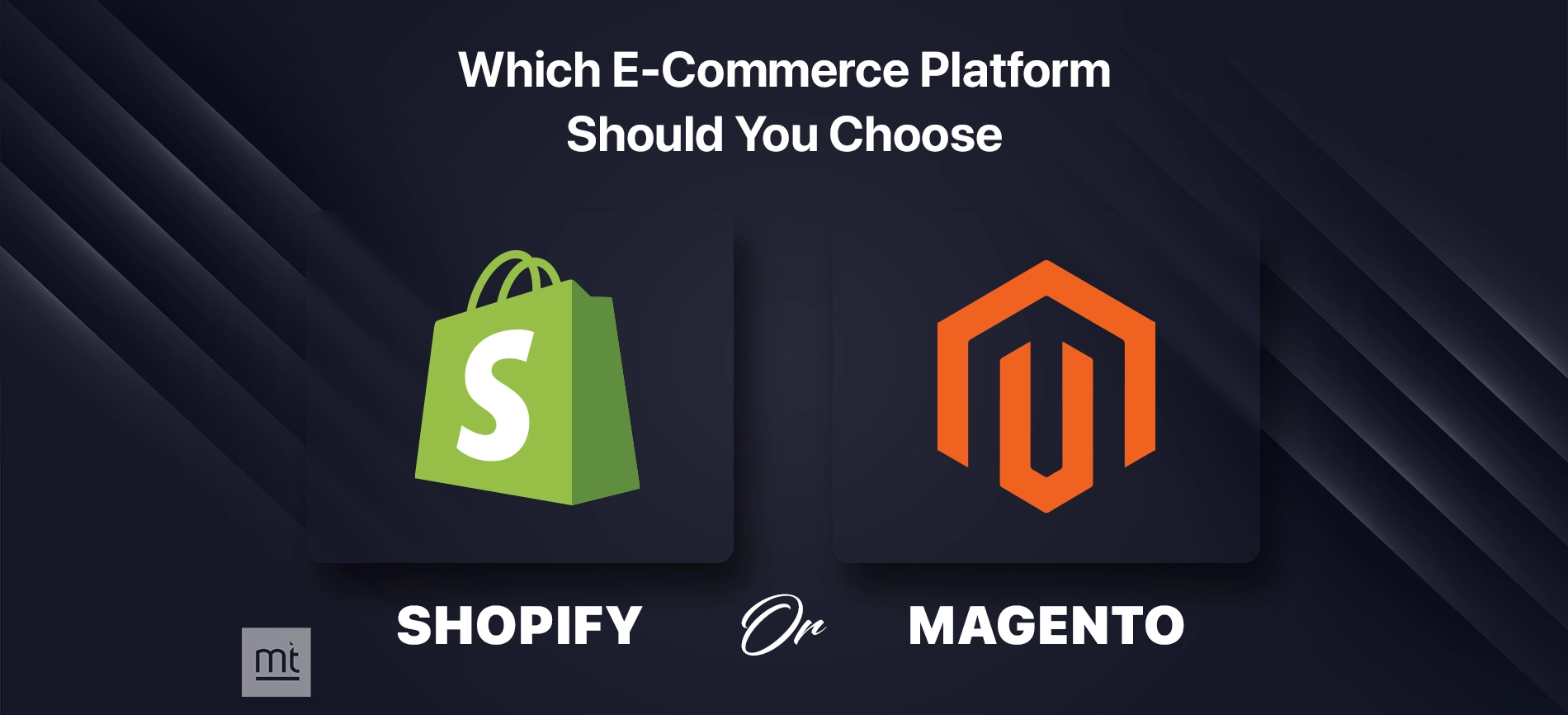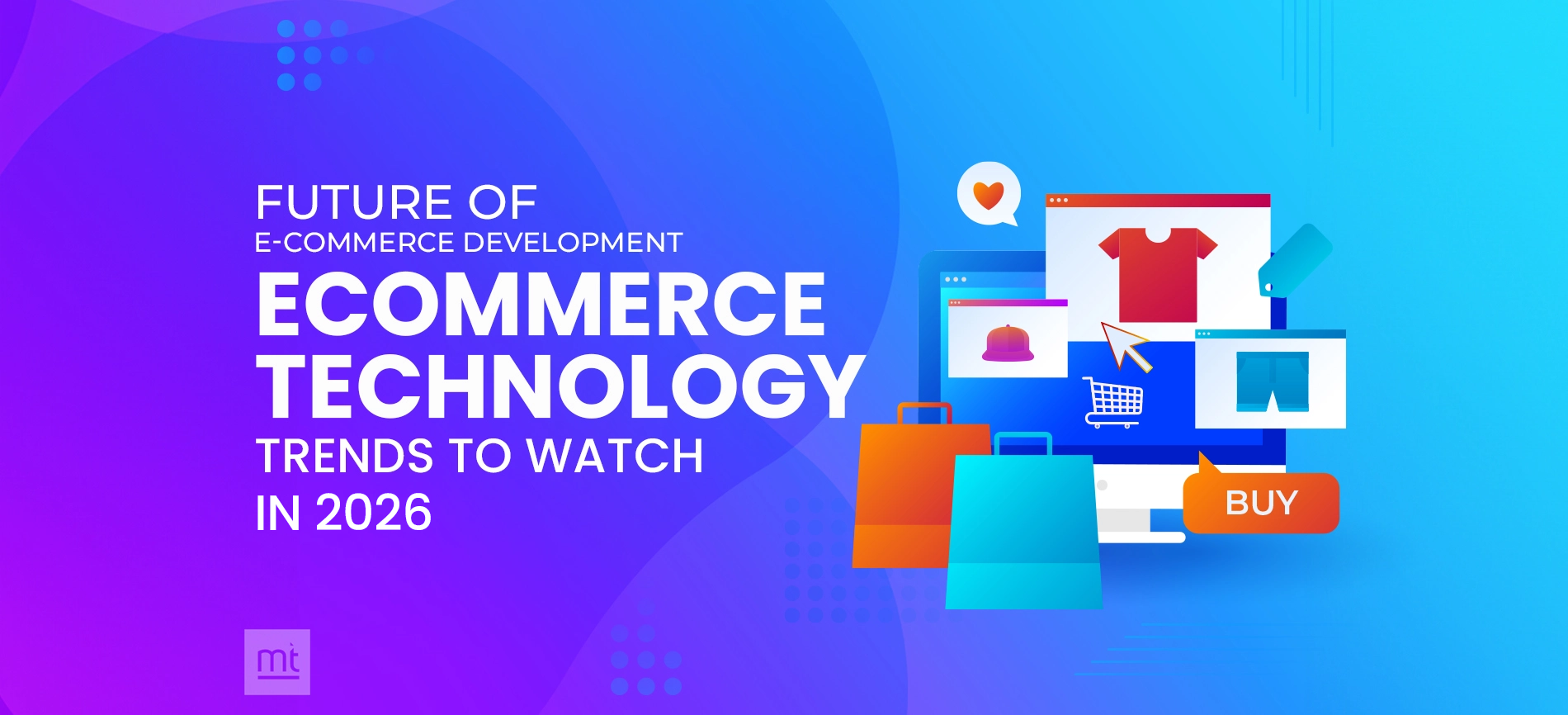Get Free Trial Week Developer Access, Try Before You Hire. Click Here to Claim Now
Introduction:
Two-way communication is very important for every business and social commerce fulfills this, especially for today's Genz consumers who seek more smoother shopping experience. Social media is the second world for today’s generation where they spend most of their time hence brands can easily approach a wider range of consumers through social platforms. You might be stunned to read that till 2028, the social commerce revenue market is likely to grow to one trillion U.S dollars. Not only this, the GWI report says over 27% of online users prefer social media to find trending products.
Below you can see an image that clearly shows how the social commerce market has skyrocketed from 2019 to 2024. In this article, you will be exploring the complete guide about social commerce, its various terms, and how it's a crucial part of the future of online shopping. Let's dive in.
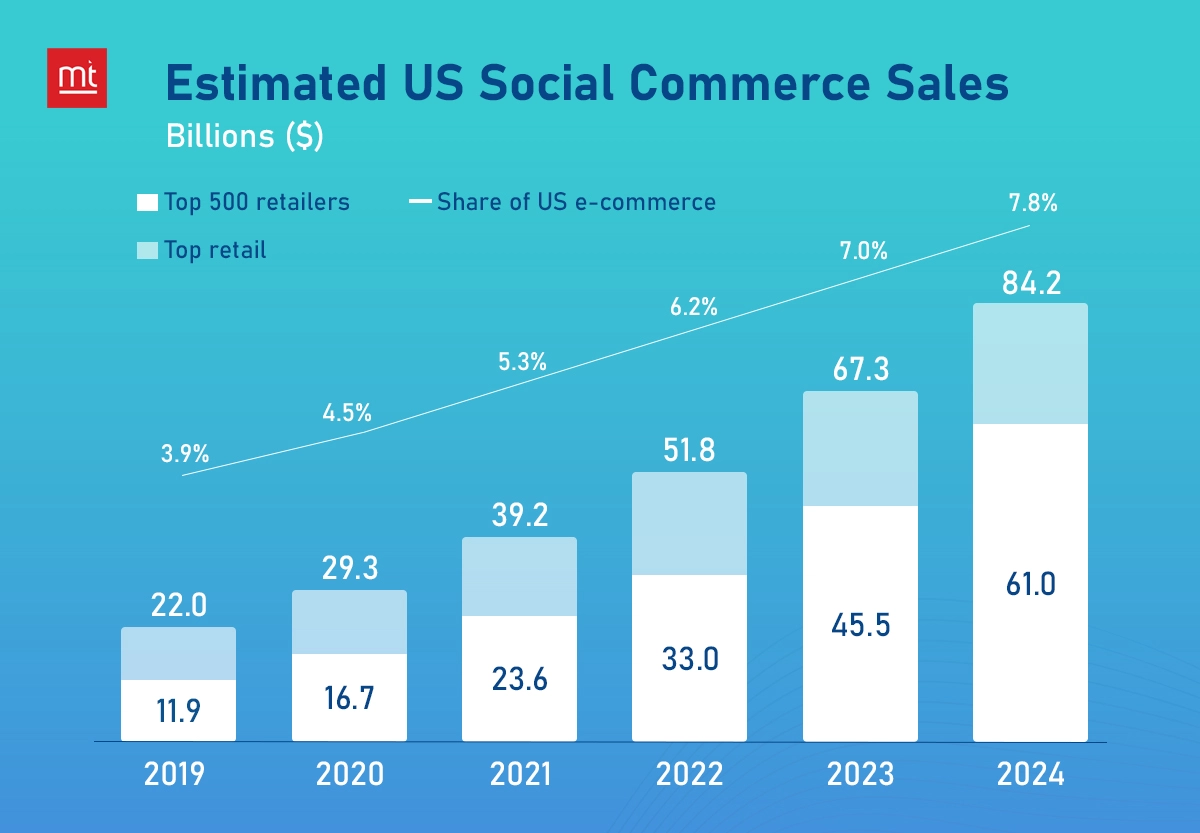
What is Social Commerce?
In simple words, social commerce is a combination of social media and e-commerce platforms. It is the next-generation shopping method in which buying and selling happen over social media platforms.
The future of Social Commerce is definitely evergreen due to its generous benefits. We can also say social commerce as social shopping as it is all about shopping through social media platforms. Nowadays, social commerce is the most used digital marketing strategy by brands and agencies as it is really effective and helpful in reaching the wider audience base with engagement.
What Are The Main Social Commerce Platforms?
Social media marketplaces such as Instagram pages, Facebook pages, and WhatsApp groups are the main social commerce platforms. These days people love social shopping due to its enormous benefits and hassle-free shopping experience. Users don't need to visit websites to shop for their favorite products. Instagram has recently integrated a checkout feature that allows consumers to directly shop from brands within the app. Moreover, there are also various social media channels that let users shop directly from their mobile itself without the need to visit the official brand website.
Pros of Social Commerce:
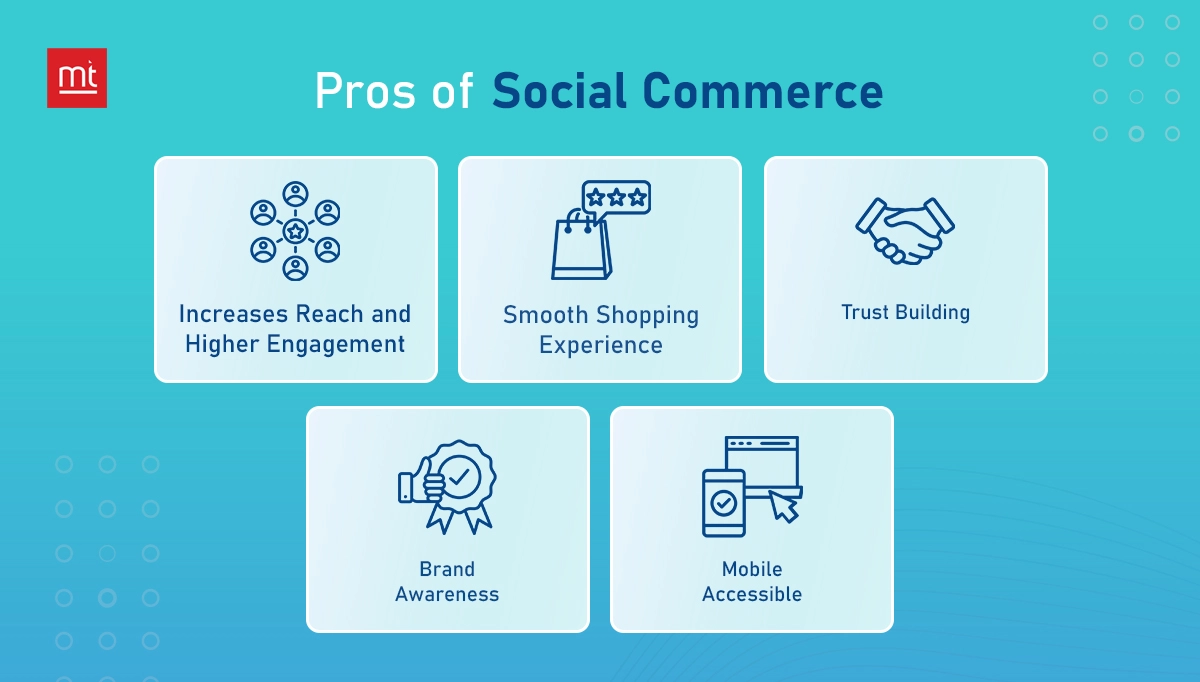
1. Increases Reach and Higher Engagement:
Obviously social media has a wider user base hence social commerce makes it easier to reach a large number of audience and achieve higher engagement.It enhances the interaction and makes shopping more enjoyable for users with likes, comments, and shares.
2. Smooth Shopping Experience:
It provides an easy shopping experience through the direct integration of purchasing functions into social media platforms. Users can easily browse and shop for the desired things without ever leaving the app.
3. Trust Building:
Social commerce helps build trust because customers can see real-time reviews, suggestions, and other comments from people who have used that product or bought it earlier. People will trust more when they see their friends and influencers recommending the products.
4. Brand Awareness:
Social commerce will eventually do branding and marketing as it will reach all types of audiences who are active on the online platform. Hence, it will create familiarity with the brand among a broader audience.
5. Mobile Accessible:
Social commerce is mobile-friendly, as social media platforms are widely used on smartphones. Hence customers can easily access it using the phone to shop their favorite products anytime and anywhere.
Cons of Social Commerce:
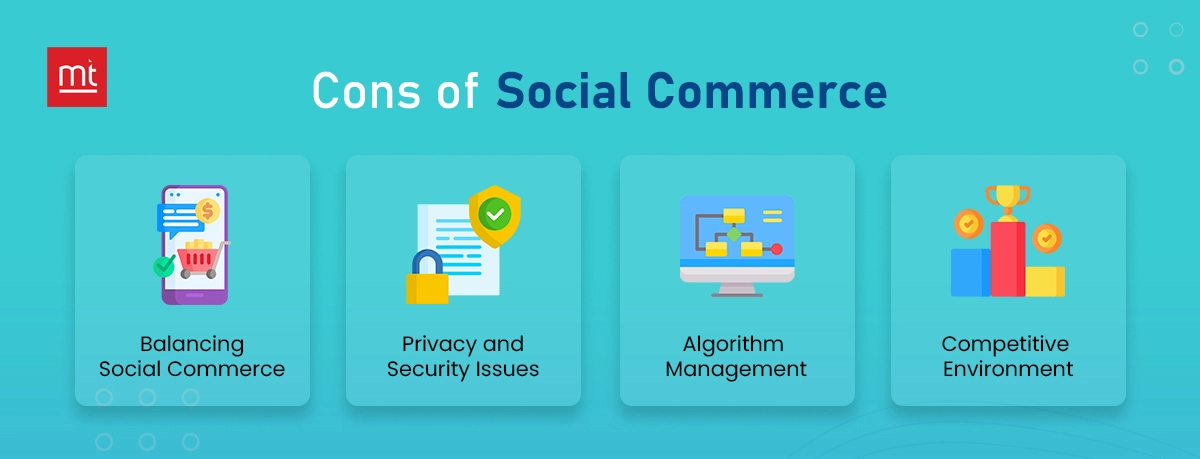
1. Balancing Social Commerce:
It is difficult to balance commerce and social media. Engaging and authentic social media content is difficult to balance with promotional, sales-driven posts. Social media and e-commerce both need equal attention to drive engagement and sales consistently.
2. Privacy and Security Issues:
Data security can be a consequence here because it requires collecting and managing user data. A lack of robust security and safety measures could lead to data breaches and harm the brand's reputation.
3. Algorithm Management:
As you know, Google updates its algorithm daily, and social media platforms also update their algorithms according to the visibility of posts, ads, and customer engagement. Hence, it's important for every business to adapt strategies to make it relevant and reach the right audience.
4. Competitive Environment:
The many firms in the social commerce market compete fiercely for consumers' attention. It takes a lot of work, effort, high-quality content, research, and advertising to make your brand look unique and attractive compared to others in the market. For small companies, getting noticed and investing money can be difficult.
Features of Social Commerce:
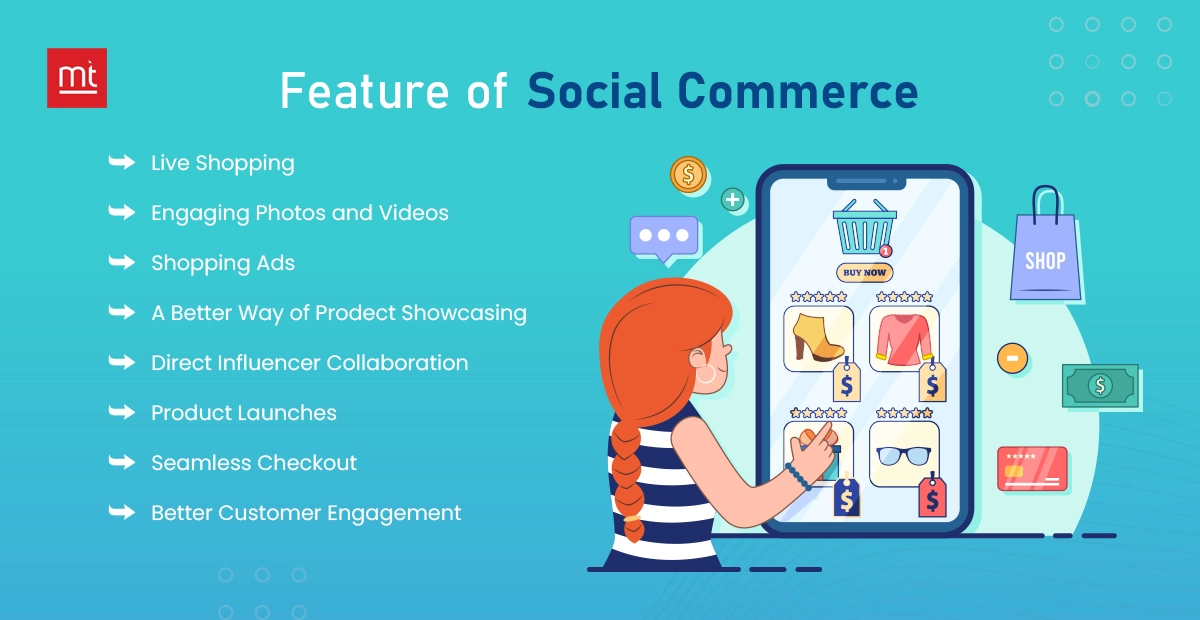
- Live Shopping: Social commerce supports live streaming that includes videos and photos of influencers with the product purpose and review. Hence it is a powerful tactic and there are more chances of product getting sold due to engagement.
- Engaging Photos and Videos: Users can view photos and videos of the product directly on the platform hence this visual content makes the shopping experience more appealing and smooth to understand and review the product.
- Shoppable Ads: Social commerce uses shoppable ADS which are effective in targeting the potential audience. These ads reach the consumers according to their interactions, inquiries, and behaviors.
- A Better way of Product Showcasing: Social commerce has a better way of product showcasing in a virtual and dynamic environment. It shows products in an aesthetic way to attract the consumer and increase the chances of buying.
- Direct Influencer Collaboration: Social commerce allows direct collaboration with influencers to present the product in an authentic way. It is the best social media marketing strategy to promote the product and improve brand visibility.
- Product Launches: Social commerce has product launch features by default, such as countdowns, teasers, previews, and more. These will create excitement and divert more audience towards the brand.
- Seamless checkout: Users can complete the checkout process seamlessly without leaving their social media account.
Understanding Social Commerce Business:
There are mainly three ways by which social commerce interacts with customers.
- Content-driven: It's all about how your brand stands out unique from the crowd. Unique and creative UGC content created by influencers and brands helps to drive people and sales crazy. Social commerce gives customers an opportunity to explore new experiences and stay tuned about new launches.
- Experience-driven: The goal of experience-driven social commerce is to make using social media platforms for purchases easy and fun. To engage clients more deeply, this strategy incorporates interactive features such as gaming, augmented reality (AR), virtual reality (VR), and live streaming.
- Network-driven: Network-driven refers to using the power of social connections and community to reach potential customers. It is very much dependent on word of mouth, which is basically reviews and recommendations from trusted sources and communities.
Social Commerce vs E-Commerce
Social commerce and E-commerce are similar in one way: both are used for shopping purposes, but they differ in many ways. Let's see how.
- Social commerce helps users collaborate with various brands and products in real time. In E-commerce, consumers search for products according to categories on platforms like Amazon, Flipkart, etc.
- Social commerce is a two-way communication, i.e., it is a communication between buyer and seller. Meanwhile, E-commerce is a one-way communication.
- In social commerce, purchases are made via social media platforms. On the other hand, E-commerce purchases are made via a website or app.
- The consumer can easily engage and communicate in social commerce while in e-commerce, it can be time-consuming as it involves processes like generating tickets and so on.
- Social commerce is more effective than E-commerce because it is interactive and consumers can watch influencer videos and reviews about the specific products under one roof.
Benefits of Social Commerce:
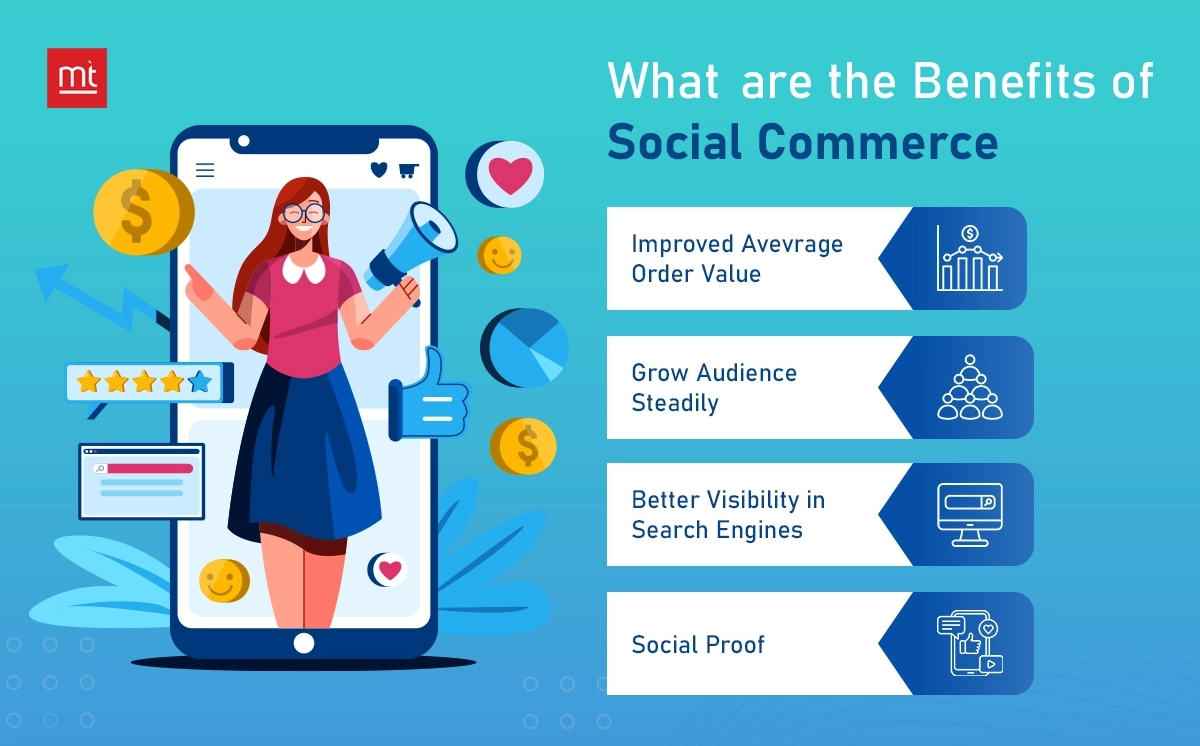
1. Better Customer Engagement
it allows consumers to easily connect with brands by liking, messaging, and commenting on the post. Users can interact with the brand conveniently with a quick response as it is two-way communication. It offers 24*7 support service and better assistance with the inquiry. Hence continuous engagement will boost engagement and build a strong connection with the audience about brand loyalty and trust.
2. Improved Average Order Value
The rise Of Social Commerce has helped the majority of small and big businesses to increase their order value. Social commerce uses useful algorithms to recommend suitable products to the customer according to their choice and other preferences. Hence it will eventually improve the average orders of brands and increase the sales.
3. Grow Audience Steadily
Retaining followers and customers is a crucial part of the business journey. Social commerce helps preserve the audience over time by posting engaging content and ads that will keep customers interested and keep them updated with the latest products, information, and offers.
4. Better Visibility in Search Engines
It's all about relevancy and engagement. Regular posting and engagement help brands gain better visibility in search engines. This generates a good amount of traffic over time, and people will easily recognize your brand and find it.
5. Social Proof
Social proof enhances brand credibility. Today social media has a large user base and people can freely write their review and experience about the product publicly. The genuine and positive reviews and testimonials serve as a valuable proof for the brand to convince the people online.
Examples of Businesses Using Social Commerce Today:
Below are some of the examples that use social commerce and have been building brand loyalty.

1. Glossier:
Glossier is a top-notch beauty brand that uses UGC content, which encourages customers to share their makeup and skincare looks. They also repost the reviews on their Instagram page.
2. Nike:
Nike is a famous sportswear and apparel brand that collaborates with athletes and influencers to reach a wider audience through shoppable posts on Instagram.
3. H&M:
It is a famous clothing brand and uses Instagram shopping features and UGC content. They add direct product links in their instagram feeds for easy purchase.
4. Shopify Stores:
These days, Shopify stores come with in-built social commerce tool integrations. Hence, they can be used to post stories, collaborate with influencers, and more.
5. Sephora:
Sephora is a luxury cosmetic brand that uses UGC content and does influencer partnerships to promote their product online with makeup tutorials and new launches via live streaming and shoppable posts.
6. Lenskart:
Lenskart is a renowned glasses and eyewear brand that allows users to try on glasses virtually.
Social Commerce Hacks Every Entrepreneur Can Follow
Below we have researched some of the useful social commerce hacks that every entrepreneur must consider to elevate their brand and user experience. Here they are:
- Leverage User-Generated Content (UGC), it creates a great impact when any customer posts the picture of your product by tagging your brand.
- You must add shoppable post features on your platforms, such as Instagram and Facebook. This will provide an easy shopping experience.
- Collaborate with Influencers that are relevant to your industry and ask them to promote your brand.
- Giveaways and contests are the best way to make buyers happy and increase customer interaction. You can ask participants to follow your account, post, and tag friends to get freebies.
- Make sure your social commerce platform is mobile-optimized, as most of the traffic will be coming from mobile.
- Use live streaming features on platforms like Instagram and Facebook to showcase product launches, behind-the-scenes content, and Q&A sessions.
- Consider investing in professional photography and video production to have high-quality visuals and photos of your products.
- Never make customers wait, impress your customer with prompt replies to comments, messages, and reviews.
- Integrate chatbots into your social commerce platform to be always available for customers. This way, you can also offer instant customer support and personalized shopping recommendations.
- Make time to examine your social media statistics frequently to find out what type of content your followers are liking.
Why Choose ManekTech to Leverage Social Commerce Business?
We are the leading eCommerce development company in USA with decades of experience in web development, social marketing, app development, and more. Our team excels in creating high-quality content, delivering seamless shopping experiences, and building strong community networks. Our experts are well-familiar with the terms of social commerce platforms and use advanced analytics to refine your strategy, ensuring optimal performance and growth. Choose Manektech if you want to hire Shopify Developers to make your brand stand out in the competitive social commerce landscape, and achieve long-term loyalty.
Conclusion
Hope you find the above article useful. With the growing competitive business world, you need a unique and effective approach apart from the traditional approach to drive more engagement and increase sales. Social commerce is the fastest-growing method that every small and big business is adopting. It is one of the most reliable and 100% working social media marketing tactics if done correctly.
Do you use social commerce for your business? If you have something interesting to share about social commerce, feel free to drop your ideas on WhatsApp https://wa.me/+918511428441
Subscribe to Our Newsletter!
Join us to stay updated with our latest blog updates, marketing tips, service tips, trends, news and announcements!


